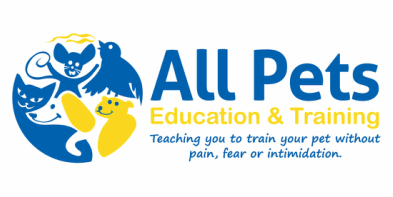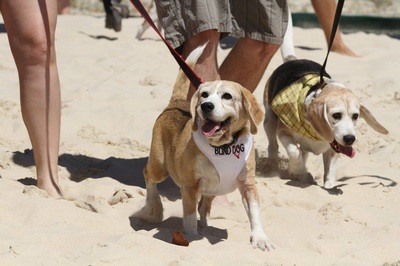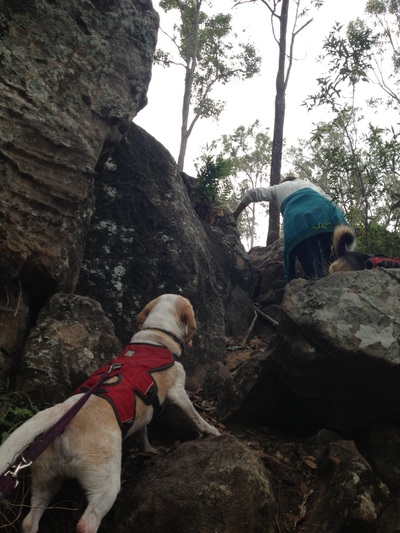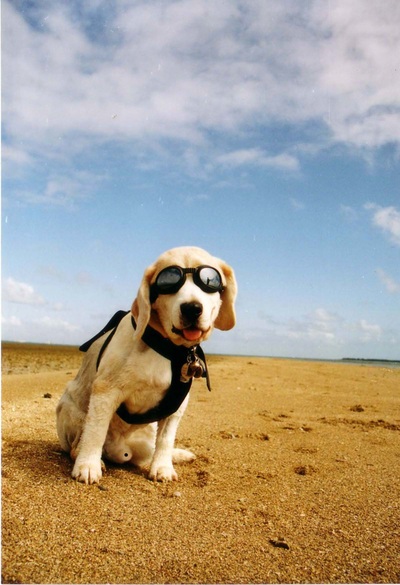Blind Dogs
What causes blindness in dogs?
Dogs are considered blind when they have suffered a vision impairment in both eyes – this can result in either partial or total loss of sight.
There are many causes of blindness in dogs. They eye is an organ that has a structure that receives the reflection of an image and then processes it. If any of this relay is disrupted, the visual process becomes impaired, and the dog is no longer able to process the image.
Most often the onset of blindness in dogs is gradual. In this case the eye structure deteriorates over a period of time. Often vision loss isn’t experienced until the dog is considered old.
However some gradual processes, can occur in younger pets as well.
Things that may cause a gradual decline in vision include but are not limited to:
Dogs can also experience sudden onset blindness.
If a dog becomes blind suddenly they may appear disorientated, confused or depressed and withdrawn.
Causes for Sudden onset blindness in dogs include but are not limited to:
If you suspect your dog is suffering from blindness, a thorough veterinary exam is recommended.
For cases of sudden onset blindness – please do not delay seeking veterinary help, some cases may respond to treatment. Even if your pet will not regain their sight, if there is an underlying medical condition this needs to be diagnosed and treated where appropriate.
What to expect
What you can do to help
Dogs are considered blind when they have suffered a vision impairment in both eyes – this can result in either partial or total loss of sight.
There are many causes of blindness in dogs. They eye is an organ that has a structure that receives the reflection of an image and then processes it. If any of this relay is disrupted, the visual process becomes impaired, and the dog is no longer able to process the image.
Most often the onset of blindness in dogs is gradual. In this case the eye structure deteriorates over a period of time. Often vision loss isn’t experienced until the dog is considered old.
However some gradual processes, can occur in younger pets as well.
Things that may cause a gradual decline in vision include but are not limited to:
- Age related cataracts – these can be removed and the lens replaced to restore vision in some cases
- PRA (progressive retinal atrophy)
- Diabetes (resulting in cataracts)
- Prolonged corneal diseases (dry eye aka keratoconjunctivitis sicca (KCS), ulcers, entropion, trichiasis, distichiasis)
Dogs can also experience sudden onset blindness.
If a dog becomes blind suddenly they may appear disorientated, confused or depressed and withdrawn.
Causes for Sudden onset blindness in dogs include but are not limited to:
- Chorioretinitis (inflammation of the choroid and retina – internal structures of the eye)
- Retinal detachment secondary to Hypertension (high blood pressure) or Trauma
- Retinal degeneration (SARDS – sudden acquired retinal degeneration)
- Optic neuritis (inflammation of the optic nerve)
- Intracranial disease (eg tumour)
- Glaucoma (eye is also usually painful)
- Uveitis (inflammation of the uveal tract which includes the iris, ciliary body and choroid layer – internal eye structures)
If you suspect your dog is suffering from blindness, a thorough veterinary exam is recommended.
For cases of sudden onset blindness – please do not delay seeking veterinary help, some cases may respond to treatment. Even if your pet will not regain their sight, if there is an underlying medical condition this needs to be diagnosed and treated where appropriate.
What to expect
- Dogs that are experiencing blindness may appear confused or disorientated.
- Some dogs will appear depressed, withdrawn or even lazy.
- You may also notice that they are unusually clumsy or are bumping into things.
- The dog gets “lost” when locating his/her usual sleeping spot, food, toys or water.
- Your dog may startle easier and be scared of things more than before.
What you can do to help
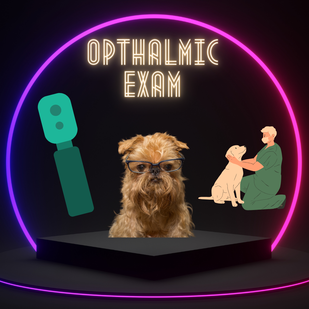
Veterinary Assessment
The first thing you should be doing is seeking help from a trained veterinary professional (not your mechanic, grocer or someone from the dog park).
The first thing you should be doing is seeking help from a trained veterinary professional (not your mechanic, grocer or someone from the dog park).
Training
Clicker Training
Training your dog using a clicker (or any other audible marker sound – tongue click, whistle etc), can help them distinguish when they have done the correct thing.
The clicker in dog training is used as a precise marker – saying yes, that is exactly what I wanted you to do and is the bridge between capturing the correct behaviour and the reward.
For example – teaching the dog to sit using a lure.
With the dog in a standing position, take a reward, and place it in front of their nose. Gradually raise the treat up and take it from their nose over the back of the head – most dogs will sit in order to follow the treat. The second their butt hits the ground, the trainer clicks, and then follows up with the reward.
The click to the dog, will indicate “Yes that’s exactly what they wanted me to do – great now I’m going to get a reward”.
Verbal Cues
Obviously your dog that is suffering from blindness is going to be a poor candidate to train using hand signals. So you will want to teach your dog several verbal cues – you can do this at home, however, if you are at all concerned or confused, you should enroll in a class or have private sessions with a trainer that has experience training blind dogs. You want to get this right as quickly as possible to reduce confusion for your dog.
When using verbal cues, don’t start adding them too soon when you are teaching a behaviour. Make sure the dog has performed it (usually using a food lure) at least 3 times before.
Next, don’t talk too much (talk to your dog, but don’t narrate the whole world to the dog, or repeat a cue over and over again.
Cues you should consider teaching are:
You can also consider using body touch cues – such as touching the dog so that it follows to that side, touch between shoulders and the dog stops etc.
Vibrations are also used in helping blind dogs (especially if they are also hearing impaired) – stomping on the ground may alert them that you are nearby. Two stomps could indicate a change in surface is coming up on a walk (for example walking off the edge of a foot path and back up).
Shaping Games
Playing shaping games with your dog will help them build confidence and offer new behaviours.
Ask for the shaping handout or visit http://www.allpetseducationandtraining.com.au/shaping-behaviour.html
Tricks
You can teach your dog several tricks. Not only is this a confidence builder it will also strengthen the bond between the both of you.
Teach your dog the tricks using lures and then add your verbal cue.
Tricks could include Roll Over, Spin, Rewind (spin in opposite direction), Shake a paw, Chin Target to floor, Beg etc) .
Scent Work
Scent work is an under used skill in most dog training. Think about it, dogs are built to smell (and blind dogs even more). Teach your dog to find food, toys, and specific odours. Again this is not only mentally and physically enriching for them, this is another confidence builder as well.
Clicker Training
Training your dog using a clicker (or any other audible marker sound – tongue click, whistle etc), can help them distinguish when they have done the correct thing.
The clicker in dog training is used as a precise marker – saying yes, that is exactly what I wanted you to do and is the bridge between capturing the correct behaviour and the reward.
For example – teaching the dog to sit using a lure.
With the dog in a standing position, take a reward, and place it in front of their nose. Gradually raise the treat up and take it from their nose over the back of the head – most dogs will sit in order to follow the treat. The second their butt hits the ground, the trainer clicks, and then follows up with the reward.
The click to the dog, will indicate “Yes that’s exactly what they wanted me to do – great now I’m going to get a reward”.
Verbal Cues
Obviously your dog that is suffering from blindness is going to be a poor candidate to train using hand signals. So you will want to teach your dog several verbal cues – you can do this at home, however, if you are at all concerned or confused, you should enroll in a class or have private sessions with a trainer that has experience training blind dogs. You want to get this right as quickly as possible to reduce confusion for your dog.
When using verbal cues, don’t start adding them too soon when you are teaching a behaviour. Make sure the dog has performed it (usually using a food lure) at least 3 times before.
Next, don’t talk too much (talk to your dog, but don’t narrate the whole world to the dog, or repeat a cue over and over again.
Cues you should consider teaching are:
- Name
- Sit
- Drop/Down
- Come
- Close (teach your dog to do a shoulder target to your legs)
- Leave
- Thank you/Swap (to give an item back)
- Stop
- Stay
- Left
- Right
- Forward
- Back
You can also consider using body touch cues – such as touching the dog so that it follows to that side, touch between shoulders and the dog stops etc.
Vibrations are also used in helping blind dogs (especially if they are also hearing impaired) – stomping on the ground may alert them that you are nearby. Two stomps could indicate a change in surface is coming up on a walk (for example walking off the edge of a foot path and back up).
Shaping Games
Playing shaping games with your dog will help them build confidence and offer new behaviours.
Ask for the shaping handout or visit http://www.allpetseducationandtraining.com.au/shaping-behaviour.html
Tricks
You can teach your dog several tricks. Not only is this a confidence builder it will also strengthen the bond between the both of you.
Teach your dog the tricks using lures and then add your verbal cue.
Tricks could include Roll Over, Spin, Rewind (spin in opposite direction), Shake a paw, Chin Target to floor, Beg etc) .
Scent Work
Scent work is an under used skill in most dog training. Think about it, dogs are built to smell (and blind dogs even more). Teach your dog to find food, toys, and specific odours. Again this is not only mentally and physically enriching for them, this is another confidence builder as well.
Equipment
There is equipment that you can purchase for your dog that will help alert others to their special needs.
You can purchase blind dog bandanas and harnesses.
You could also consider using a harness such as the Ruff Wear Webmaster – this harness fits the dog snuggly and comes equipped with a handle – this may be useful in assisting you to provide extra support for your dog when going up and down stairs, and getting in and out of cars etc.
Canes for Dogs
There are a few varieties (most are homemade) of canine canes. These are devices that are designed much like the white cane for blind humans. They enable your dog to “see” the world by acting as a bumper for the dog and preventing injuries. These canes may also assist in building confidence for your dog when they are moving about.
For instructions on making a canine cane visit www.animaleye.com.au click on downloads, and Information for Owners of Blind Pets
Doggles or Rex Specs
Protective goggles for dog. Doggles or Rex Specs are useful for protecting your dog’s eye. Yes your dog may be blind, but that doesn’t mean that their eyes are not still at risk. Blind dogs can still suffer from eye injury (unless their eyes have been removed) and risk developing painful scratches, corneal abrasions or even ocular foreign bodies etc. If your dog snuffles in long grass and bushes, is running about in unfamiliar areas etc, or walking/playing in sandy/windy/dusty areas a set of doggy goggles may help.
If you purchase goggles for your dog – take the time to condition them using positive reinforcement to wear the goggles.
Toys
Even though a dog is blind doesn’t mean that they can’t or don’t want to play.
Food dispensing toys
All dogs love these, and being blind does not meant that your dog can’t enjoy them as well.
Consider kongs, empty cardboard rolls with food stuffed inside, kong wobblers, treat balls etc.
If your dog has trouble keeping track of his/her food dispensing toy, try giving it to them in a flat tray, large short sided cardboard box or clam shell pool.
For fetch type toys – yes your blind dog can still play fetch – and those earlier cues, forward, backward, left and right, will certainly help you and your pooch find the toy.
For any game of fetch, I’m sure it’s obvious, but play in a safe area without hazards for your dog.
Use scented toys (use a dog friendly scent – not citrus – and don’t make it too heavily scented – remember, they can smell much better than we can).
Tennis balls (squeaker) – Kong makes Squeaky tennis balls – these are great, you can squeak prior to throwing it to give your dogs a heads up that it’s on its way.
You can also purchase rubber pimple balls with a bell inside – these are great as they will continue to make a sound when they hit and roll along the ground making it easier for your dog to find. One word of warning – don’t leave this ball with your dog unsupervised – I have unfortunately seen a couple of dogs that have been able to chew the ball to access and then swallow the bell.
Games
All because your dog is blind, doesn’t mean that he/she won’t still want to play games.
Hide and Seek – you go hide, and have someone release the dog to find you – using their nose they will find you in no time. Remember, when starting out, make it easier for your dog, hide where they can find you, and call them or stomp if you need to help them.
Find the treat – let your dog smell the treat – have him/her behind a baby gate or someone holding them – hide the treat – release your dog to go find it.
Water
It is vitally important, especially in our Australian climate that your dog is able to find his/her water when needed.
This means that you may need to have several water sources available. Your dog may also find it useful if you use a particular odour to indicate water – eg smear lavender under or near your dogs water bowl.
Water Hazards
However, also consider safety. If your dog is blind, do not give them access to an area with lake, dam, pool, pond or creek unless you are fully supervising.
Doorways
Again, a dog is blind, may be at risk of bumping into doorways and doors – using specific textures at entrance and exits or odours will help your dog build a mind map and navigate these obstacles.
Stairs
Blind dogs, especially those that have become recently blind, or those that are elderly and also suffering from arthritis may have trouble negotiating stairs.
Block access to these if this is the case. For dogs that are able to navigate the stairs, they may find it helpful if you again use a specific stair indicating texture and scent. Rubber mats are particularly useful to put at both the bottom and tops of stairs as this unique texture will give your dog an indication that they are approaching the stairs.
Furniture
Many dogs that become gradually blind appear to navigate well around the house and familiar furniture. However, moving furniture around may create confusion.
Putting a scent on the edge of furniture will help your dog navigate around the house, especially if you are about to move furniture or house.
Bells/Jingles Tags on other dogs/cats
Do you have other pets? Putting bells or jingling tags on your other companion pets will help your blind dog know they are approaching and may result in less startles for them. It would be even better if each companion pet had their own unique sound.
Use a “Pick Up” cue
Can you imagine being blind and all of a sudden not having your two feet firmly planted on the floor because some giant has scooped you up – a bit unsettling huh? Likewise your blind dog may be equivalently startled or frightened if all of a sudden their four feet are not on terra firma any longer. So make it a game, and tell them you are about to pick them up. “Rover, Gotcha” – pick them up, give them a reward, and put them on the ground – don’t release them until all 4 feet are safely on solid ground. We may be used to dropping our pets form a few centimetres above the ground, but when you can’t see that, it could be incredibly frightening.
Remember, frightened dogs may growl, snap or bite.
I hope this information will help you and your dog. If you would like help training your dog, contact myself, or another positive reinforcement force free trainer. You can find trainers in your area using the APDT website. Be sure to check that they have experience in training a dog that is visually impaired.
Resources for further information
http://blinddogs.com
http://www.halosforpaws.com/
https://suite.io/joy-butler/5cd8226
http://dogtime.com/training-a-blind-dog.html
http://blinddogmilo.com
References
Allan, T. (2015). Shaping Behaviour. [online] All Pets Education and Training. Available at: http://www.allpetseducationandtraining.com.au/shaping-behaviour.html [Accessed 12 Dec. 2015].
Animaleye.com.au, (2015). [online] Available at: http://www.animaleye.com.au/LinkClick.aspx?fileticket=NfA4fIQ%2fJLs%3d&tabid=20805&mid=12244 [Accessed 9 Dec. 2015].
Aspinall, V. (2006). The complete textbook of veterinary nursing. Edinburgh: Butterworth Heinemann Elsevier.
Eyevet.ca, (2015). Eye Vet - Zigler Veterinary Professional Corporation. [online] Available at: http://www.eyevet.ca/sards.html [Accessed 12 Dec. 2015].
Petersen-Jones, S. and Crispin, S. (2001). BSAVA manual of small animal ophthalmology. Cheltenham: British Small Animal Veterinary Association.
Pethealthandcare.com, (2015). Dog Blindness Symptoms, Treatments | Sudden Canine Blindness Causes. [online] Available at: http://www.pethealthandcare.com/dog-health/dog-blindness.html [Accessed 9 Dec. 2015].
Tudor, D. (2015). Causes and Symptoms of Sudden Blindness in Older Dogs | petMD. [online] Petmd.com. Available at: http://www.petmd.com/blogs/thedailyvet/ktudor/2013/dec/what-causes-sudden-blindness-in-dogs-31106 [Accessed 9 Dec. 2015].
Even though a dog is blind doesn’t mean that they can’t or don’t want to play.
Food dispensing toys
All dogs love these, and being blind does not meant that your dog can’t enjoy them as well.
Consider kongs, empty cardboard rolls with food stuffed inside, kong wobblers, treat balls etc.
If your dog has trouble keeping track of his/her food dispensing toy, try giving it to them in a flat tray, large short sided cardboard box or clam shell pool.
For fetch type toys – yes your blind dog can still play fetch – and those earlier cues, forward, backward, left and right, will certainly help you and your pooch find the toy.
For any game of fetch, I’m sure it’s obvious, but play in a safe area without hazards for your dog.
Use scented toys (use a dog friendly scent – not citrus – and don’t make it too heavily scented – remember, they can smell much better than we can).
Tennis balls (squeaker) – Kong makes Squeaky tennis balls – these are great, you can squeak prior to throwing it to give your dogs a heads up that it’s on its way.
You can also purchase rubber pimple balls with a bell inside – these are great as they will continue to make a sound when they hit and roll along the ground making it easier for your dog to find. One word of warning – don’t leave this ball with your dog unsupervised – I have unfortunately seen a couple of dogs that have been able to chew the ball to access and then swallow the bell.
Games
All because your dog is blind, doesn’t mean that he/she won’t still want to play games.
Hide and Seek – you go hide, and have someone release the dog to find you – using their nose they will find you in no time. Remember, when starting out, make it easier for your dog, hide where they can find you, and call them or stomp if you need to help them.
Find the treat – let your dog smell the treat – have him/her behind a baby gate or someone holding them – hide the treat – release your dog to go find it.
Water
It is vitally important, especially in our Australian climate that your dog is able to find his/her water when needed.
This means that you may need to have several water sources available. Your dog may also find it useful if you use a particular odour to indicate water – eg smear lavender under or near your dogs water bowl.
Water Hazards
However, also consider safety. If your dog is blind, do not give them access to an area with lake, dam, pool, pond or creek unless you are fully supervising.
Doorways
Again, a dog is blind, may be at risk of bumping into doorways and doors – using specific textures at entrance and exits or odours will help your dog build a mind map and navigate these obstacles.
Stairs
Blind dogs, especially those that have become recently blind, or those that are elderly and also suffering from arthritis may have trouble negotiating stairs.
Block access to these if this is the case. For dogs that are able to navigate the stairs, they may find it helpful if you again use a specific stair indicating texture and scent. Rubber mats are particularly useful to put at both the bottom and tops of stairs as this unique texture will give your dog an indication that they are approaching the stairs.
Furniture
Many dogs that become gradually blind appear to navigate well around the house and familiar furniture. However, moving furniture around may create confusion.
Putting a scent on the edge of furniture will help your dog navigate around the house, especially if you are about to move furniture or house.
Bells/Jingles Tags on other dogs/cats
Do you have other pets? Putting bells or jingling tags on your other companion pets will help your blind dog know they are approaching and may result in less startles for them. It would be even better if each companion pet had their own unique sound.
Use a “Pick Up” cue
Can you imagine being blind and all of a sudden not having your two feet firmly planted on the floor because some giant has scooped you up – a bit unsettling huh? Likewise your blind dog may be equivalently startled or frightened if all of a sudden their four feet are not on terra firma any longer. So make it a game, and tell them you are about to pick them up. “Rover, Gotcha” – pick them up, give them a reward, and put them on the ground – don’t release them until all 4 feet are safely on solid ground. We may be used to dropping our pets form a few centimetres above the ground, but when you can’t see that, it could be incredibly frightening.
Remember, frightened dogs may growl, snap or bite.
I hope this information will help you and your dog. If you would like help training your dog, contact myself, or another positive reinforcement force free trainer. You can find trainers in your area using the APDT website. Be sure to check that they have experience in training a dog that is visually impaired.
Resources for further information
http://blinddogs.com
http://www.halosforpaws.com/
https://suite.io/joy-butler/5cd8226
http://dogtime.com/training-a-blind-dog.html
http://blinddogmilo.com
References
Allan, T. (2015). Shaping Behaviour. [online] All Pets Education and Training. Available at: http://www.allpetseducationandtraining.com.au/shaping-behaviour.html [Accessed 12 Dec. 2015].
Animaleye.com.au, (2015). [online] Available at: http://www.animaleye.com.au/LinkClick.aspx?fileticket=NfA4fIQ%2fJLs%3d&tabid=20805&mid=12244 [Accessed 9 Dec. 2015].
Aspinall, V. (2006). The complete textbook of veterinary nursing. Edinburgh: Butterworth Heinemann Elsevier.
Eyevet.ca, (2015). Eye Vet - Zigler Veterinary Professional Corporation. [online] Available at: http://www.eyevet.ca/sards.html [Accessed 12 Dec. 2015].
Petersen-Jones, S. and Crispin, S. (2001). BSAVA manual of small animal ophthalmology. Cheltenham: British Small Animal Veterinary Association.
Pethealthandcare.com, (2015). Dog Blindness Symptoms, Treatments | Sudden Canine Blindness Causes. [online] Available at: http://www.pethealthandcare.com/dog-health/dog-blindness.html [Accessed 9 Dec. 2015].
Tudor, D. (2015). Causes and Symptoms of Sudden Blindness in Older Dogs | petMD. [online] Petmd.com. Available at: http://www.petmd.com/blogs/thedailyvet/ktudor/2013/dec/what-causes-sudden-blindness-in-dogs-31106 [Accessed 9 Dec. 2015].
